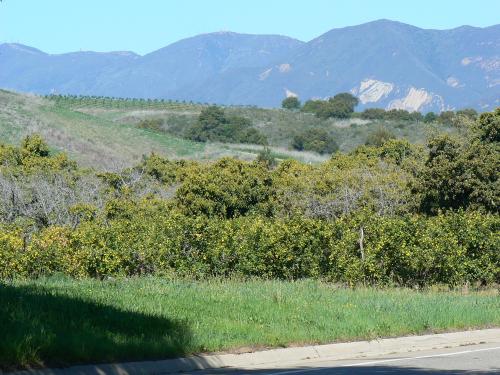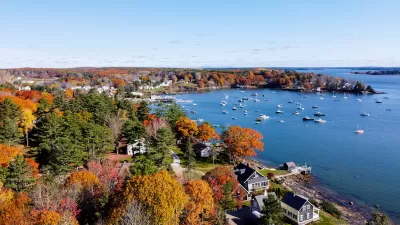Travel a few miles outside of Santa Barbara and you’ll encounter a truly rare scene – rare for coastal California in the year 2007, that is.
Travel a few miles outside of Santa Barbara and you'll encounter a truly rare scene – rare for coastal California in the year 2007, that is.
In the neighboring town of Goleta, just beyond the residential streets, are rolling green hills, meadows, lemon groves and organic family farms. A window to the turn of the last century, this landscape once defined California from San Jose to the Los Angeles citrus suburbs down to the Mexican border.


It is immediately apparent that Goleta's idyllic farms enhance the quality of life here in both tangible and intangible ways. Sure, there are bike trails, clean air, and fresh local produce. But the landscape is also psychologically soothing – a refuge from the continuous concrete and strip malls of modern Southern California. In an ideal world, every town would include a buffer zone of farmland and open space.
That Santa Barbara has managed to preserve this little piece of paradise in the face of a booming housing market is no small feat. Residents have fought to save the region's agricultural lands, which boast some of the most fertile soil and ideal growing conditions in the state.

Recent history shows that it has been a losing battle. The Goleta Valley was a sea of agriculture until the 1980's, when many of the farms were sacrificed for an inefficient mix of tract homes and shopping centers. Goleta, which also happens to house the University of California at Santa Barbara, desperately needs to find space for additional residential units.
Agrarian landscapes are worth saving, even if their preservation means skyrocketing housing prices. Viewed as totally expendable in other Southern California counties, nearly every last square foot of coastal farmland has been auctioned off to the highest bidding developer. A visit to any part of Orange County proves that the results aren't pretty.

Alabama: Trump Terminates Settlements for Black Communities Harmed By Raw Sewage
Trump deemed the landmark civil rights agreement “illegal DEI and environmental justice policy.”

Study: Maui’s Plan to Convert Vacation Rentals to Long-Term Housing Could Cause Nearly $1 Billion Economic Loss
The plan would reduce visitor accommodation by 25% resulting in 1,900 jobs lost.

Why Should We Subsidize Public Transportation?
Many public transit agencies face financial stress due to rising costs, declining fare revenue, and declining subsidies. Transit advocates must provide a strong business case for increasing public transit funding.

Wind Energy on the Rise Despite Federal Policy Reversal
The Trump administration is revoking federal support for renewable energy, but demand for new projects continues unabated.

Passengers Flock to Caltrain After Electrification
The new electric trains are running faster and more reliably, leading to strong ridership growth on the Bay Area rail system.

Texas Churches Rally Behind ‘Yes in God’s Back Yard’ Legislation
Religious leaders want the state to reduce zoning regulations to streamline leasing church-owned land to housing developers.
Urban Design for Planners 1: Software Tools
This six-course series explores essential urban design concepts using open source software and equips planners with the tools they need to participate fully in the urban design process.
Planning for Universal Design
Learn the tools for implementing Universal Design in planning regulations.
Caltrans
Smith Gee Studio
Institute for Housing and Urban Development Studies (IHS)
City of Grandview
Harvard GSD Executive Education
Toledo-Lucas County Plan Commissions
Salt Lake City
NYU Wagner Graduate School of Public Service





























